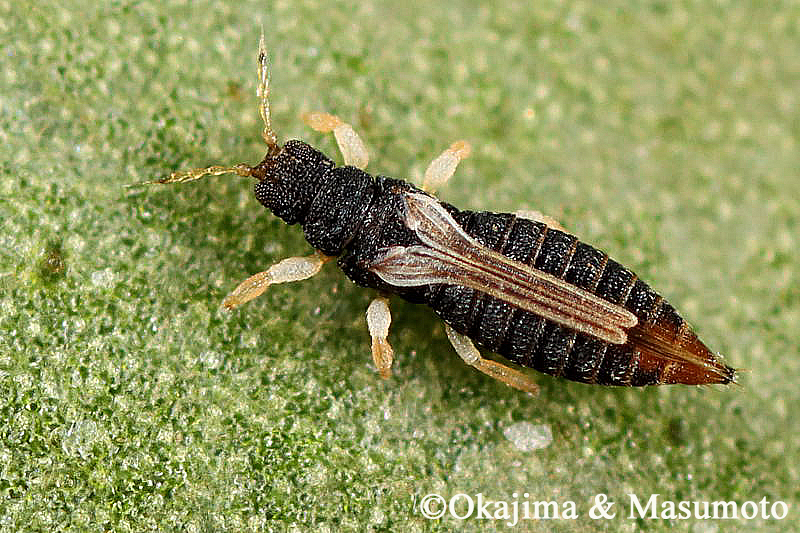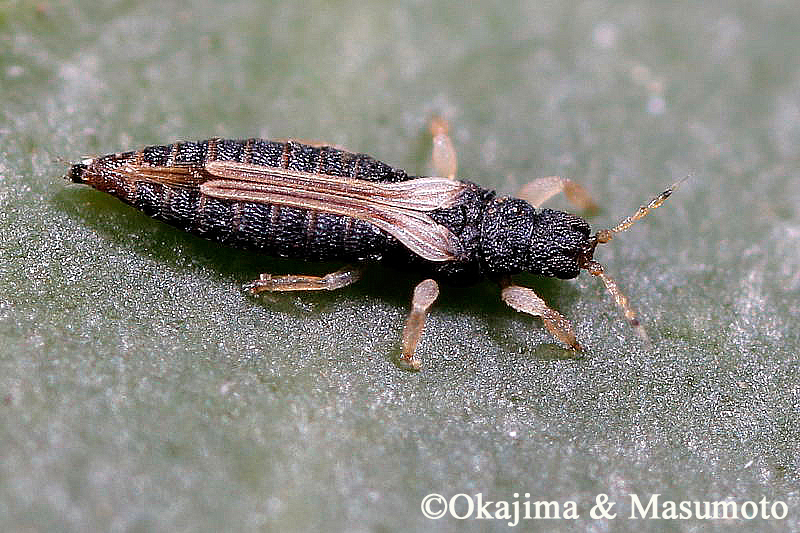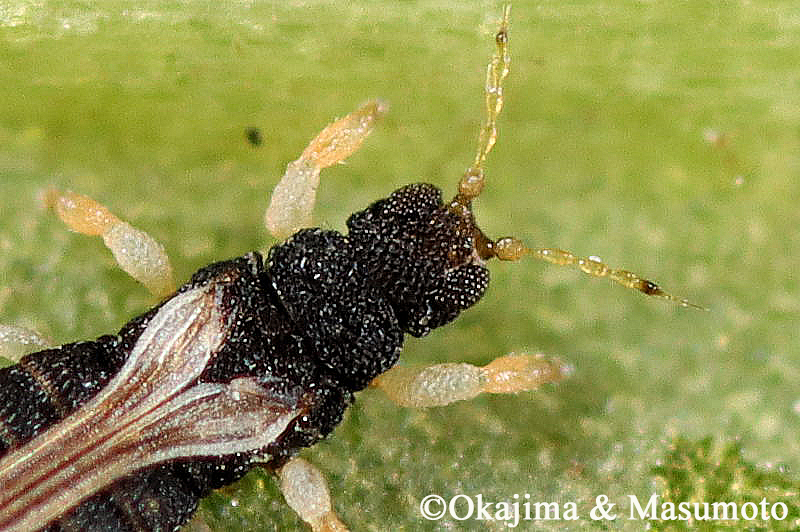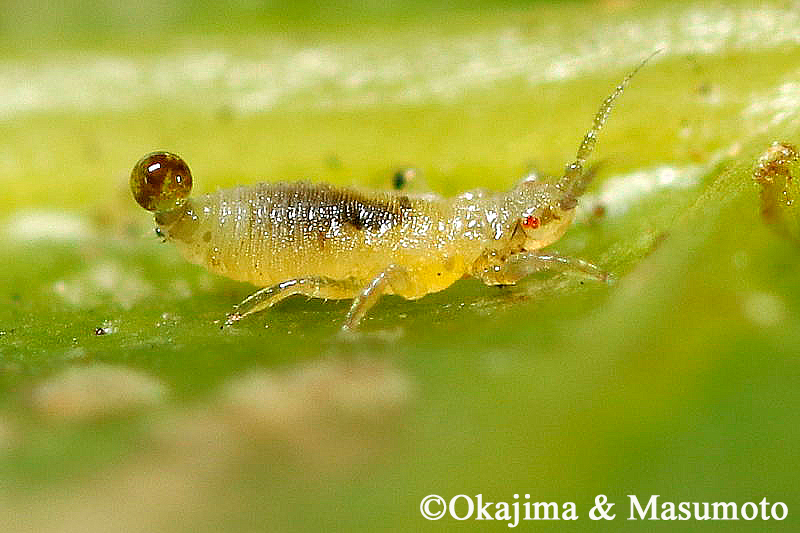Heliothrips haemorrhoidalis (Bouché, 1833)
和名:クロトンアザミウマ
本種はコスモポリタンで世界各地から知られているが、オスはブラジル南部及びペルー南部でのみ得られていることから、アマゾン盆地が原産と考えられている (Nakahara et al., 2015)。寄主範囲は広く様々な植物の主に葉に見られる。日本にも広く分布し、最も普通に見られるアザミウマの1つである。関東地方ではイヌビワ、テイカカズラ、ツツジ、シダ類等で特に多くみられ、ほぼ一年中見られる。
Heliothrips属は最近まで3種が知られており、本種以外は南米のみから知られていることから南米原産と考えられていたが、Xie et al. (2019)により中国から得られた本属の雌雄がH. longisensibilisとして記載されたことから、本属の原産地について疑問が出てきた。しかし、H. longisensibilisと同定される個体がブラジルでも得られていることから、近年にブラジルから移入したと考えられる(Xie et al., 2019)。
H. haemorrhoidalisは触角第2節は黄褐色で先端が淡い、触角第4-5節基部が首状に狭まる、メスの腹部第8-9節はしばしば黄色味を帯び、第10背板は暗褐色で基部が黄色味を帯びるのに対し、H. longisensibilisは触角第2節は暗褐色、触角第4-5節基部が首状に狭まらず太い、メスの腹部第8-9節は一様に褐色~暗褐色で黄色味を帯びず第10背板は一様に褐色であること等により識別できる。
This species is a cosmopolitan and distributed worldwide, but it is presumably originated from Amazon basin because the male of this species has been collected from southern Brazil and southern Peru (Nakahara et al., 2015).
This species is leaf-feeding and occurs on many plant families. In Japan, it is widespread throughout and one of the most common thrips species, and in Kanto-area of Honshu, it occurs on especially Ficus erecta, Trachelospermum asiaticum, Rhododendron spp. and so on, through the year. The genus Heliothrips is presumably originated from South America judging from three species, which has been previously known, were known from South America only. Recently, Xie et al. (2019) was described H. longisensibilis based on both sexes collected from China. However, they concluded that the new species were introduced from Brazil because the specimens collected from Brazil are morphologically identical to the new species.
H. haemorrhoidalis can be distinguished from H. longisensibilis by antennal segment II yellowish brown with apex paler, antennal segments IV-Vnarrowed to basal neck, and in female abdominal tergites VIII-IX often yellowish and tergite X dark brown with base yellowish, whereas antennal segment II dark brown, antennal segments IV-V stout at base, and in female abdominal segments VIII-IV uniformly brown to dark brown, not yellowish, and tergite X uniformly brown in the latter species.
-

Female

Female

Female, head and thorax

Larva II